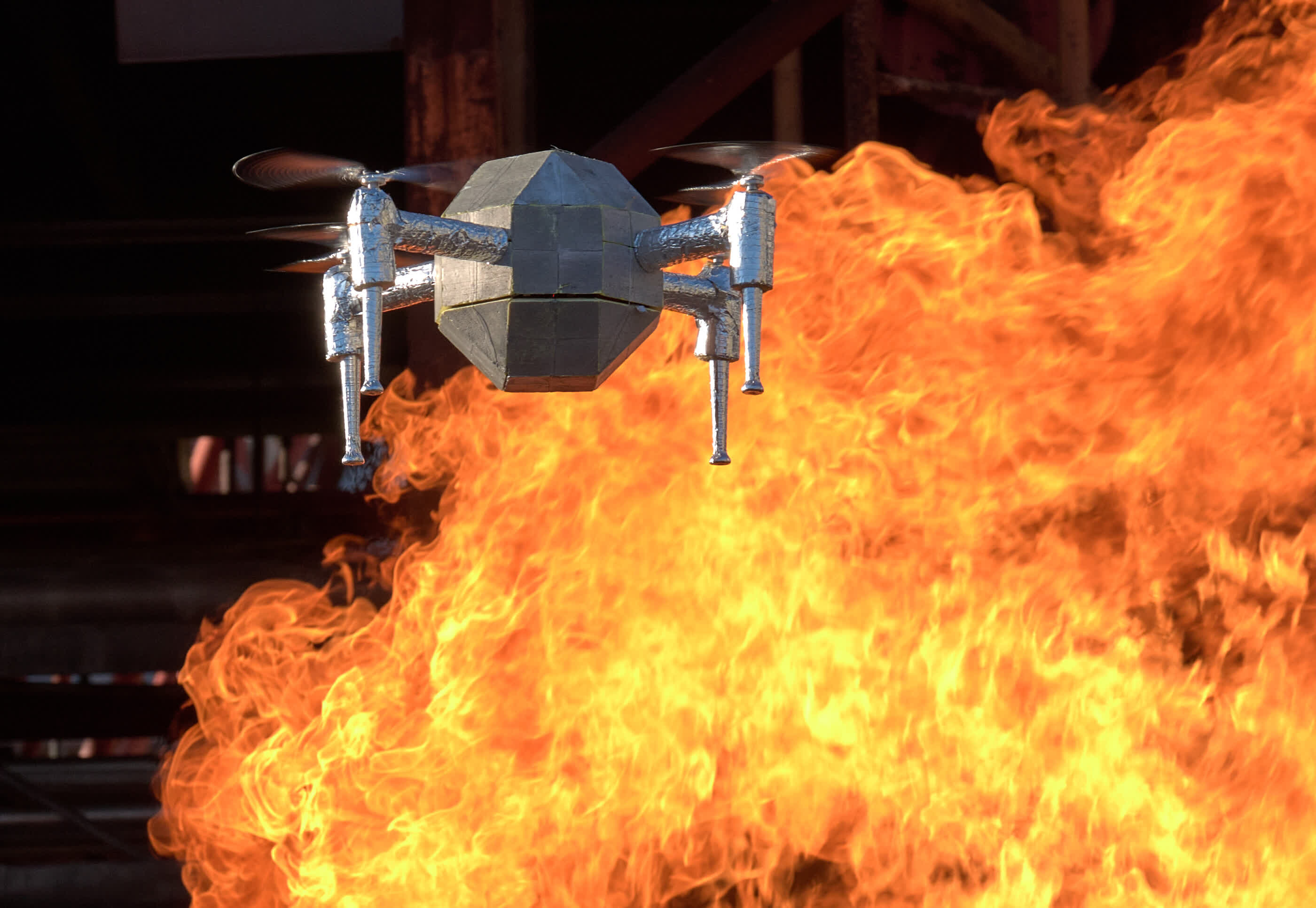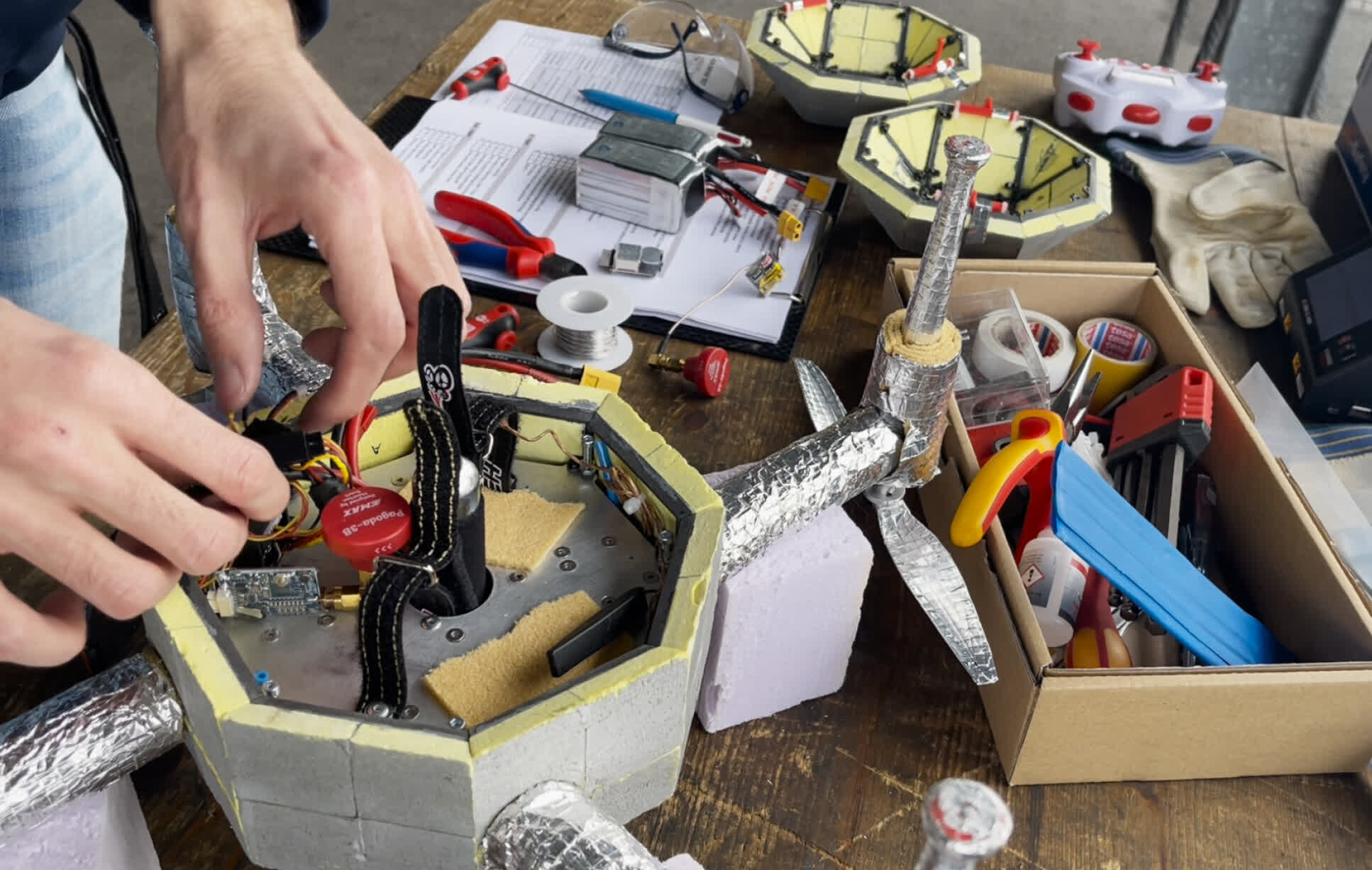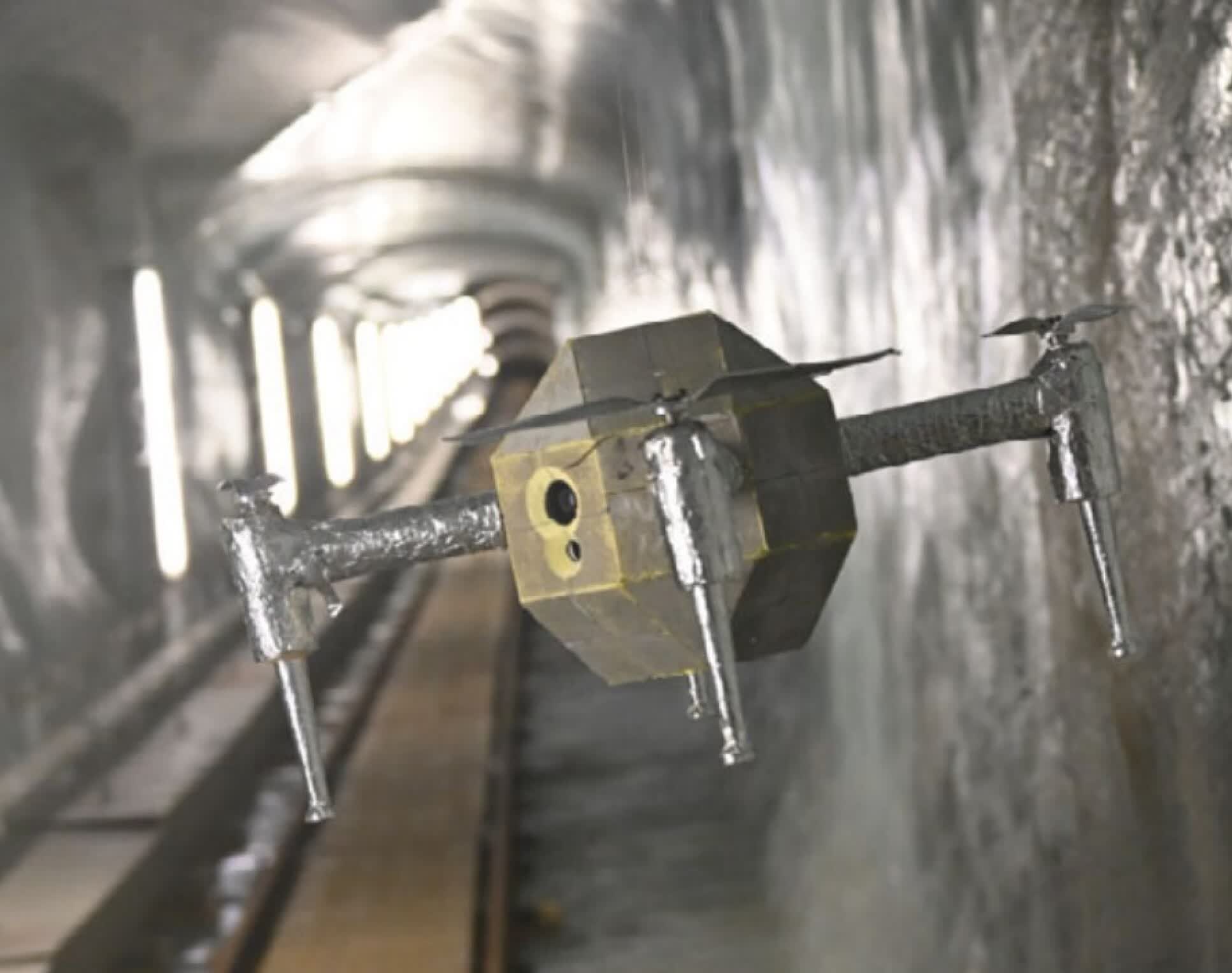What just happened? Drones have a huge number of uses beyond toys for hobbyists, camera operators, and parcel deliveries. Their next job could be as firefighters in situations such as burning buildings or forest fires, thanks to a new prototype that has been built to withstand extreme temperatures.
Researchers from Imperial College London and Empa - the material science unit of Swiss Federal Laboratories - have built a prototype drone, called FireDrone.
As per The Reg, the drone uses a new polyimide plastic thermal aerogel insulation that coats the entire device in the fire-resistant material. Aerogels are air-filled polymers, formed from a low-density structure of nanofibers, that are reinforced with glass fibers. NASA uses them as insulation in space suits.
The FireDrone also features an in-built cooling system that helps it withstand temperatures of 200 degrees centigrade (392 degrees Fahrenheit) for ten minutes.
The drone has been tested in Switzerland's Andelfingen training center, used by the fire department of the Canton of Zurich's building insurance, where it was able to fly through flames created by a gas fire without any damage.
The study's Principal Investigator, Professor Mirko Kovac, Director of the Aerial Robotics Lab at Imperial College London and Head of the Laboratory of Sustainability Robotics at Empa, said that the FireDrone could be sent in ahead of firefighters to gather crucial information such as noting trapped people, building layouts, and unexpected hazards, potentially helping keep firefighters safe and saving more lives.
The researchers looked to nature for inspiration in making FireDrone heat-resistant without adding too much weight to its body. The drone's super-reflecting aluminum coating works in the opposite way that a penguin's feathers absorb heat. The canisters of liquid CO2 being converted to gas is inspired by the cooling effect of sweat evaporation on our bodies. And the layer of aerogel tiles mimics the spittlebug creating foam layers to insulate itself.
It's not just extreme heat that the drone can withstand. FireDrone can also operate in extreme cold, as the team showed when it took the device to a glacier tunnel in Switzerland. This should make FireDrone an option for mountain rescuers searching in freezing conditions.
"The application of drones is often limited by environmental factors like temperature. We demonstrate a way to overcome this and are convinced our findings will help to unleash the future power of drones for extreme environments," said Kovac.


